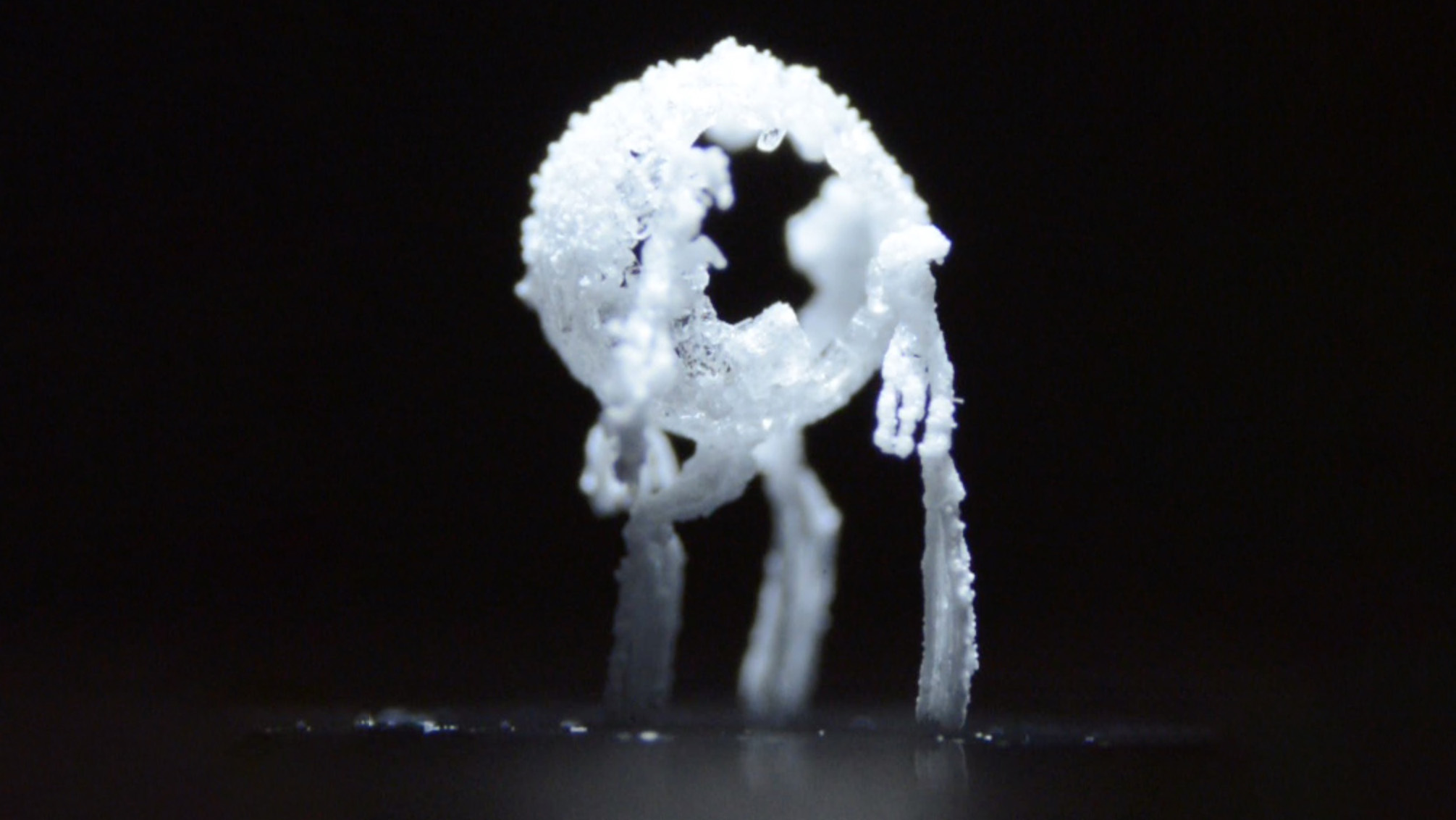Easy desalination
Salts dissolved in water can foul metal surfaces or clog pipes, but MIT researchers have found a way to make them fall right off.

When water used in many industrial systems evaporates, salts and other dissolved minerals can be left behind on component surfaces, where they eventually degrade equipment, block pipes, and reduce the efficiency of important heat exchange processes. Now MIT researchers have discovered a phenomenon that could help solve this problem while potentially turning the contaminants into useful products—and as a bonus, it looks really cool.
Samantha McBride, PhD ’20, Henri-Louis Girard, PhD ’20, and Kripa Varanasi, a professor of mechanical engineering, showed that if surfaces are given a nanoscale texture that repels water and then heat is applied, dissolved salts crystallize in a distinctive way: they form a partial spherical shell that rises on a set of spindly legs, creating microscopic shapes that the researchers call “crystal critters.” Eventually the legs grow so long they are unable to support the critter’s weight, and the blob of salt breaks off and falls or is swept away.
By varying the amount of heat along the surface, it’s possible to get the crystal formations to roll along in a specific direction. The higher the temperature, the faster they grow and lift off, minimizing the amount of time the crystals block the surface.
Preventing the fouling of heat exchangers is an especially important potential benefit: according to Varanasi, this problem costs the US and other industrialized nations a quarter of a percent of GDP. He also says the process could make it possible to use untreated salty water for some industrial cooling systems that otherwise consume billions of gallons of valuable fresh water. In some situations the recovered salts and other minerals could even be salable products.
The methods for making the textures to produce a water-repelling surface are already well developed, Varanasi says, so implementing this process at industrial scale should be relatively quick.
Keep Reading
Most Popular
Large language models can do jaw-dropping things. But nobody knows exactly why.
And that's a problem. Figuring it out is one of the biggest scientific puzzles of our time and a crucial step towards controlling more powerful future models.
How scientists traced a mysterious covid case back to six toilets
When wastewater surveillance turns into a hunt for a single infected individual, the ethics get tricky.
The problem with plug-in hybrids? Their drivers.
Plug-in hybrids are often sold as a transition to EVs, but new data from Europe shows we’re still underestimating the emissions they produce.
Google DeepMind’s new generative model makes Super Mario–like games from scratch
Genie learns how to control games by watching hours and hours of video. It could help train next-gen robots too.
Stay connected
Get the latest updates from
MIT Technology Review
Discover special offers, top stories, upcoming events, and more.